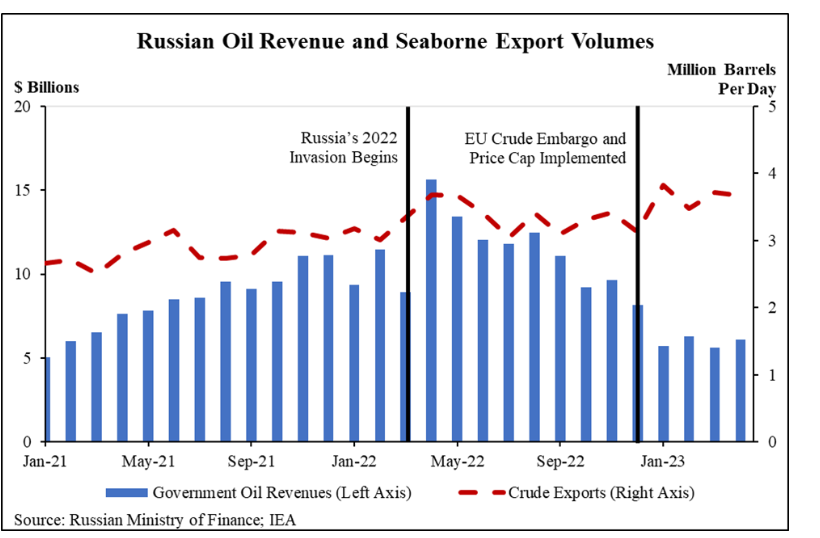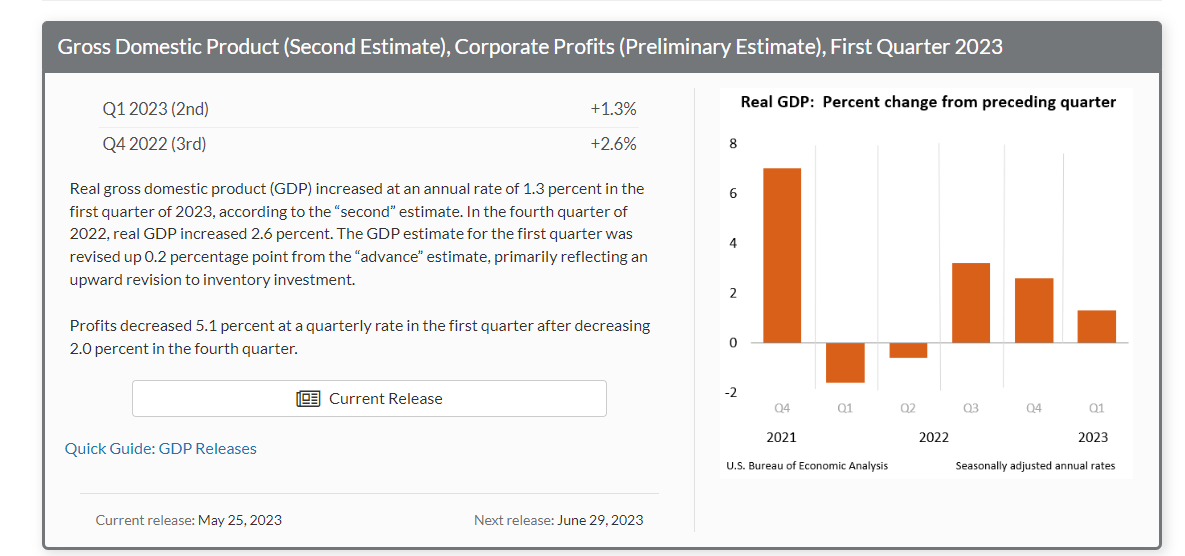Gasoline Futures Plunge, Saudi-Russo Discord Dampens Rally

So much for the Memorial Day rally? Gasoline futures are dropping nearly 7 cents/gallon in the early going this morning, leading the energy complex lower, and wiping out the strong gains we saw Wednesday. Diesel prices are down 4 cents so far and are now just a penny away from wiping out their gains for the week. Prices did recover some of their early losses following the Q1 GDP estimate that came in slightly above earlier guesses, and showed the US economy continues to see modest growth despite all of the recession warnings.
A day after the Saudi Oil minister threatened speculators shorting oil prices, a Russian official downplayed the chances of OPEC & friends agreeing to another output cut at its meeting next week, which seems to have sent some of the bullish bandwagon jumpers back to the sidelines.
The DOE reported a surge in the estimated demand for gasoline and diesel last week, which pushed inventories to new lows for the year, with gasoline stocks now at their lowest seasonal level in more than 6 years. While the weekly demand estimates are notoriously volatile (aka unreliable) the diesel reading touched its 2nd highest level of the year and offered hope for producers who have been languishing under some of the worst seasonal consumption that we’ve seen in decades.
What a difference a year makes: This time last year distillate cracks were spiking north of $70/barrel, some $25/barrel more than gasoline, incenting refiners to maximize diesel output. This year, gasoline cracks are rallying to a 10-month high and are trading $8/barrel over diesel values. The forward curve still favors diesel output long term and shows profitable run-rates for refiners for the next 2 years, albeit at much more modest levels than the records we’ve seen set over the prior 12 months.
Oil inventories saw a huge decline of more than 12 million barrels last week, despite another SPR release of 1.5 million barrels. The EIA’s adjustment factor was at play again, with a reduction in the fudge factor accounting for 8 million barrels of the drop, while a big decrease in imports accounted for another 7-million-barrel decline last week, while exports held strong north of 4-million barrels/day.
Refinery runs ticked slightly higher for a 2nd week, and continue to hold near year-ago levels, and should continue to ramp up as a busy spring maintenance season comes to an end. The main impediment to seeing refiners reach maximum run rates in June appears to be the rash of fires that have been breaking out lately. It’s not just US refiners that are struggling with fires, multiple refineries in Mexico have had multiple issues in the past week, further complicating the issues we saw back in February when 3 fires broke out on the same day.
Game change or pipe dream? Plans to build a 250mb/day oil refinery near the WTI delivery hub in Cushing OK were announced this week, with the facility claiming to operate on Hydrogen and Oxygen fuel sources that managers claim will reduce emissions by 95%. IF the project moves forward, construction is scheduled to start in 2024, with the first potential for supply starting in 2027.
The US Treasury published a progress report on the Russian Oil price cap last week, taking a page out of the DOE’s SPR playbook and patting itself on the back for a job well done. A Bloomberg article this morning details how India and China are the main beneficiaries of that plan.
Click here to download a PDF of today's TACenergy Market Talk.
Latest Posts
Week 16 - US DOE Inventory Recap
Energy Markets Trading Quietly In The Red As Ethanol Prices Rally To Five-Month High
The Struggle For Renewable Producers Continues As A Rapid Influx Of Supply And Crashing Credit Prices Make Biodiesel
After Years Of Backwardation, Diesel Prices Have Slipped Into Contango Over The Past Week
Social Media
News & Views
View All
Week 16 - US DOE Inventory Recap

Energy Markets Trading Quietly In The Red As Ethanol Prices Rally To Five-Month High
Energy markets are trading quietly in the red to start Wednesday’s session after a healthy bounce Tuesday afternoon suggested the Israel-Iran-linked liquidation had finally run its course.
There are reports of more Ukrainian strikes on Russian energy assets overnight, but the sources are sketchy so far, and the market doesn’t seem to be reacting as if this is legitimate news.
Ethanol prices have rallied to a 5-month high this week as corn and other grain prices have rallied after the latest crop progress update highlighted risks to farmers this year, lower grain export expectations from Ukraine, and the approval of E15 blends this summer despite the fact it pollutes more. The rally in grain and renewables prices has also helped RIN values find a bid after it looked like they were about to test their 4-year lows last week.
The API reported small changes in refined product inventories last week, with gasoline stocks down about 600,000, while distillates were up 724,000. Crude oil inventories increased by 3.2 million barrels according to the industry-group estimates. The DOE’s weekly report is due out at its normal time this morning.
Total reported another upset at its Port Arthur refinery that’s been a frequent flier on the TCEQ alerts since the January deep freeze knocked it offline and damaged multiple operating units. This latest upset seems minor as the un-named unit impacted was returned to normal operations in under an hour. Gulf Coast basis markets have shrugged off most reports of refinery upsets this year as the region remains well supplied, and it’s unlikely we’ll see any impact from this news.
California conversely reacted in a big way to reports of an upset at Chevron’s El Segundo refinery outside of LA, with CARBOB basis values jumping by more than a dime. Energy News Today continued to show its value by reporting the upset before the flaring notice was even reported to area regulators, proving once again it’s ahead of the curve on refinery-related events. Another industry news outlet meanwhile struggled just to remember where the country’s largest diesel seller is located.
Click here to download a PDF of today's TACenergy Market Talk

The Struggle For Renewable Producers Continues As A Rapid Influx Of Supply And Crashing Credit Prices Make Biodiesel
The sigh of relief selloff continues in energy markets Tuesday morning, with gasoline prices now down more than 20 cents in 7 sessions, while diesel prices have dropped 26 cents in the past 12. Crude oil prices are within a few pennies of reaching a 1 month low as a lack of headlines from the world’s hot spots allows some reflection into the state of the world’s spare capacity for both oil and refined products.
Gasoline prices are trading near a 6-week low this morning, but still need to fall about another nickel in order to break the weekly trendline that pushed prices steadily higher since December. If that trend breaks, it will be safer to say that we saw the end of the spring gasoline rally on April 12th for the 2nd year in a row. Last year RBOB futures peaked on April 12 at $2.8943 and bottomed out on May 4th at $2.2500. The high (at this point) for this year was set on April 12th at $2.8516, and the low overnight was $2.6454.
It’s not just energy commodities that are seeing an unwind of the “flight to safety” trade: Gold prices had their biggest selloff in 2 years Monday and continue to point lower today. Just how much money poured into commodities in the weeks leading up to the direct confrontation between Israel and Iran is unclear, but we have seen in year’s past that these unwind-events can create a snowball effect as traders can be forced to sell to cover their margin calls.
Supply > Demand: The EIA this morning highlighted the record setting demand for natural gas in the US last year, which was not nearly enough to offset the glut of supply that forced prices to a record low in February. A shortage of natural gas in Europe was a key driver of the chaotic markets that smashed just about every record in 2022, and an excess of natural gas supply in Europe and the US this year is acting as a buffer, particularly on diesel prices.
The struggle for renewable producers continues as a rapid influx of supply and crashing credit prices make Biodiesel, RD and SAF unprofitable for many. In addition to the plant closures announced in the past 6 months, Vertex Energy reported Monday it’s operating its Renewable Diesel facility in Mobile AL at just 50% of capacity in Q1. The truly scary part for many is that the $1/gallon Blender's tax credit ends this year and is being replaced by the “Clean” Fuel production credit that forces producers to prove their emissions reductions in order to qualify for an increased subsidy. It’s impossible to say at this point how much the net reduction will be for domestic producers, but importers will get nothing, and at current CI values, many biodiesel producers may see their “blend credit” cut by more than half.
Click here to download a PDF of today's TACenergy Market Talk.




